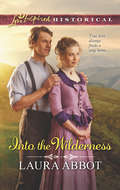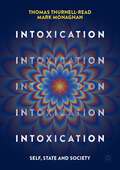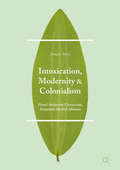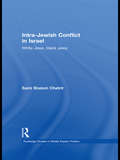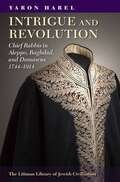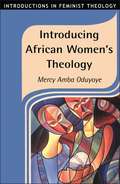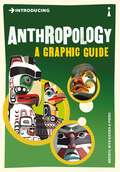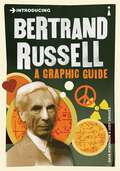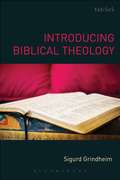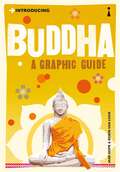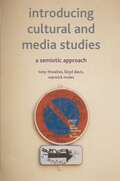- Table View
- List View
Into the Wilderness (Mills And Boon Love Inspired Historical Ser.)
by Laura AbbotHe survived a battlefield massacre and, before that, his fiancée’s betrayal.
Into the World of the New Testament: Greco-Roman and Jewish Texts and Contexts
by Daniel Lynwood SmithDaniel Lynwood Smith orients readers of the New Testament to its historical and cultural settings, introducing the cast of characters, and illuminating key concepts by exploring their use in ancient texts. Smith includes quotations from many primary sources including Josephus, Tacitus, the Qumran Community, Pliny the Younger, and other carefully chosen texts from lesser-known ancient sources. These texts are all carefully woven together with commentary, to provide a narrative framework for the material and guide students through the text. A glossary of complex terms is provided, to make everything as clear as possible for the newcomer to New Testament studies.This integrative approach both introduces the key sources to the reader and elaborates on their significance for understanding the New Testament. In an admirably concise format Smith is able to cover the military-political history of Israel-Palestine, the messianic movements of Second Temple Judaism, the ancient practice of crucifixion and the development of the Christian canon. Through immersion in these ancient Jewish, Christian, and Greco-Roman texts and contexts, contemporary readers take a step closer to experiencing the New Testament with first-century eyes and ears.
Into the World of the New Testament: Greco-Roman and Jewish Texts and Contexts
by Daniel Lynwood SmithDaniel Lynwood Smith orients readers of the New Testament to its historical and cultural settings, introducing the cast of characters, and illuminating key concepts by exploring their use in ancient texts. Smith includes quotations from many primary sources including Josephus, Tacitus, the Qumran Community, Pliny the Younger, and other carefully chosen texts from lesser-known ancient sources. These texts are all carefully woven together with commentary, to provide a narrative framework for the material and guide students through the text. A glossary of complex terms is provided, to make everything as clear as possible for the newcomer to New Testament studies.This integrative approach both introduces the key sources to the reader and elaborates on their significance for understanding the New Testament. In an admirably concise format Smith is able to cover the military-political history of Israel-Palestine, the messianic movements of Second Temple Judaism, the ancient practice of crucifixion and the development of the Christian canon. Through immersion in these ancient Jewish, Christian, and Greco-Roman texts and contexts, contemporary readers take a step closer to experiencing the New Testament with first-century eyes and ears.
Into Thin Air: Explosive Alliance Witness Undercover Into Thin Air (Mills And Boon Love Inspired Suspense Ser.)
by Mary Ellen PorterTHE ONLY WITNESS
Intoxication: Self, State and Society
by Thomas Thurnell-Read Mark MonaghanWhat images come to mind when you read the word ‘intoxication’? What behaviour do you associate with the word ‘drunk’? When you hear the word ‘drug’, what images do you recall? This textbook provides an essential and thorough grounding in debates about the role of intoxication in contemporary society, from social and cultural perspectives. It examines intoxication in the broadest sense as including both legal and illegal substances and both culturally accepted and socially stigmatised practices. Given the pace of recent changes in policy and practice – from the increasingly common legalisation of cannabis, to the recent trend of sobriety amongst adolescents and young adults – this book stands out by offering both a through historical and theoretical overview and a topical and forward looking exploration of current debates. It adopts a multi-scale approach to examine wider patterns of change so it considers the subjective experiences of the role intoxication plays in the lives of individuals and groups, in the construction of diverse identities and how this differs by age, gender and ethnicity. The authors play particular attention to the way in which the state justifies interventions based on moral, health and criminal justice discourses and also consider the role played by other individuals and institutions, not least the mass media and the alcohol industry, in propagating and challenging common sense explanations of intoxication. It speaks to undergraduates, master's students and above, with a range of pedagogic features, and offers insights into policy and practice.
Intoxication, Modernity, and Colonialism: Freud’s Industrial Unconscious, Benjamin’s Hashish Mimesis
by Dušan I. BjelićThis book depicts how Freud’s cocaine and Benjamin’s hashish illustrate two critiques of modernity and two messianic emancipations through the pleasures of intoxicating discourse. Freud discovered the “libido” and “unconscious” in the industrial mimetic scheme of cocaine, whereas Benjamin found an inspiration for his critique of phantasmagoria and its variant psychoanalysis in hashish’s mimesis. In addition, as part of the history of colonialism, both drugs generated two distinct colonial discourses and, consequently, two different understandings of the emancipatory powers of pleasure, the unconscious, and dreams. After all, great ideas don't liberate; they intoxicate.
Intra-Jewish Conflict in Israel: White Jews, Black Jews (Routledge Studies in Middle Eastern Politics)
by Sami Shalom ChetritThis is the first book in English to examine the Mizrahi Jews (Jews from the Muslim world) in Israel, focussing in particular on social and political movements such as the Black Panthers and SHAS. The book analyses the ongoing cultural encounter between Zionism and Israel on one side and Mizrahi Jews on the other. It charts the relations and political struggle between Ashkenazi-Zionists and the Mizrahim in Israel from post-war relocation through to the present day. The author examines the Mizrahi political struggle and resistance from early immigration in the 1950s to formative events such as the 1959 Wadi-As-Salib rebellion in Haifa; the 1970s Black Panther movement uprising; the ‘Ballot Rebellion’ of 1977; the evolution and rise of the SHAS political party as a Mizrahi Collective in the 1980s, and up to the new radical Mizrahi movements of the 1990s and present day. It examines a new Mizrahi discourse which has influenced Israeli culture and academia, and the nature of the political system itself in Israel. This book will be of great interest to those involved in Middle East Studies and Politics, Jewish and Israeli Studies and Race and Ethnic Studies.
Intra-Jewish Conflict in Israel: White Jews, Black Jews (Routledge Studies in Middle Eastern Politics)
by Sami Shalom ChetritThis is the first book in English to examine the Mizrahi Jews (Jews from the Muslim world) in Israel, focussing in particular on social and political movements such as the Black Panthers and SHAS. The book analyses the ongoing cultural encounter between Zionism and Israel on one side and Mizrahi Jews on the other. It charts the relations and political struggle between Ashkenazi-Zionists and the Mizrahim in Israel from post-war relocation through to the present day. The author examines the Mizrahi political struggle and resistance from early immigration in the 1950s to formative events such as the 1959 Wadi-As-Salib rebellion in Haifa; the 1970s Black Panther movement uprising; the ‘Ballot Rebellion’ of 1977; the evolution and rise of the SHAS political party as a Mizrahi Collective in the 1980s, and up to the new radical Mizrahi movements of the 1990s and present day. It examines a new Mizrahi discourse which has influenced Israeli culture and academia, and the nature of the political system itself in Israel. This book will be of great interest to those involved in Middle East Studies and Politics, Jewish and Israeli Studies and Race and Ethnic Studies.
Intrigue and Revolution: Chief Rabbis in Aleppo, Baghdad, and Damascus, 1774-1914 (The Littman Library of Jewish Civilization)
by Yaron HarelThis is a book of unexpected drama: all eleven chief rabbis appointed in this period of unprecedented change in the Jewish communities of the Fertile Crescent became the subject of controversy and were subsequently dismissed. This took place against a background of events rarely discussed in the context of Jewish society: crime, hooliganism, slander, power struggles, sexual promiscuity, and even assaults and assassination attempts on rabbis. Using a wide range of testimonies gleaned from Ottoman Jewish, Arabic, and European sources, Yaron Harel paints a colourful picture of these upheavals set firmly in the social and political context of the time and far removed from the commonly accepted image of Jewish communities in the Ottoman empire. Jews were also affected by modernization and political conflict in the wider society of the time, and these too gave rise to power struggles. The chief rabbis were at the forefront of these confrontations, especially those that resulted from the new inclination towards Western culture. Most of them recognized that the challenges of modernization had to be met, although in a way that did not endanger religious principles. Their openness to change stemmed from a concern for the future of the communities for which they were responsible, but they were often vociferously opposed by those who were free from such responsibility. The communal politics that ensued were sometimes heated to the point of violence. In the latter years of the empire, many Jews came to support the Young Turks, with their promise of liberty and equality for all. The atmosphere of the time was such that rabbis had to develop political awareness and engage in Ottoman politics. This was another source of tension within the community since the new regime punished anyone suspected of opposition severely.This lively and fascinating study based on little-known sources offers a lens through which to view the Jewish society of the Ottoman empire at a time when all the traditional norms were being challenged.
Introducing a Hermeneutics of Cispicion: Reading Sarah and Esau’s Gender (Failures) Beyond Cisnormativity (The Library of Hebrew Bible/Old Testament Studies)
by Dr Jo Henderson-MerrygoldA hermeneutics of cispicion challenges cisnormative presuppositions that shape and, at times, occlude the variations in gender and sex exhibited by key characters in the ancestral narrative of Genesis 12–50. It charts the progression from Paul Ricoeur's hermeneutics of suspicion, through liberation, feminist and queer approaches. Focusing on Deryn Guest's queer and trans hermeneutics, Henderson-Merrygold then offers a new strategy for reading against fixed, binary gender assumptions, where a character's sex always matches that assigned at birth. The initial case study addresses Sarah, who is the proto-matriarch of the ancestral narratives in Genesis. Masculinities contrast with femininities, and Sarah's own agency makes the picture of a consistent gender hard to identify. By closely reading the text, different facets of Sarah's story emerge to emphasise how much the narrative directs the reader towards a cisnormative reading. However, Henderson-Merrygold shows it is not only the images of Sarah as feminine woman and mother that remain visible. The subject of the second case study, Esau, is regularly judged to be a hypermasculine character due to his bodily appearance, but repeatedly fails to fulfil the expectations related to that appearance. Though often condemned as a poor example of (hyper)masculinity, a cispicious reading identifies a richer and more nuanced figure. Attending to Esau's actions, his rejection of the gendered expectations appears intentional, allowing him to settle more comfortably into his own identity. This project advocates for, and demonstrates the value of, creative, interpretations of biblical texts that challenge both malestream and feminist gender assumptions.
Introducing a Hermeneutics of Cispicion: Reading Sarah and Esau’s Gender (Failures) Beyond Cisnormativity (The Library of Hebrew Bible/Old Testament Studies)
by Dr Jo Henderson-MerrygoldA hermeneutics of cispicion challenges cisnormative presuppositions that shape and, at times, occlude the variations in gender and sex exhibited by key characters in the ancestral narrative of Genesis 12–50. It charts the progression from Paul Ricoeur's hermeneutics of suspicion, through liberation, feminist and queer approaches. Focusing on Deryn Guest's queer and trans hermeneutics, Henderson-Merrygold then offers a new strategy for reading against fixed, binary gender assumptions, where a character's sex always matches that assigned at birth. The initial case study addresses Sarah, who is the proto-matriarch of the ancestral narratives in Genesis. Masculinities contrast with femininities, and Sarah's own agency makes the picture of a consistent gender hard to identify. By closely reading the text, different facets of Sarah's story emerge to emphasise how much the narrative directs the reader towards a cisnormative reading. However, Henderson-Merrygold shows it is not only the images of Sarah as feminine woman and mother that remain visible. The subject of the second case study, Esau, is regularly judged to be a hypermasculine character due to his bodily appearance, but repeatedly fails to fulfil the expectations related to that appearance. Though often condemned as a poor example of (hyper)masculinity, a cispicious reading identifies a richer and more nuanced figure. Attending to Esau's actions, his rejection of the gendered expectations appears intentional, allowing him to settle more comfortably into his own identity. This project advocates for, and demonstrates the value of, creative, interpretations of biblical texts that challenge both malestream and feminist gender assumptions.
Introducing African Women's Theology (Introductions in Feminist Theology)
by Mercy OduyoyeThis volume describes the context and methodology of Christian theology by Africans in the past two decades and provides brief descriptions of sample treatments of theological issues, such as creation, Christology, ecclesiology and eschatology. The aim of the book is to lead interested persons to the sources of African women's Christian theology. Throughout an effort has been made to illustrate how African culture and the multi-religious context has influenced Christian women's selection of theological issues. The importance of daily life to theology and the attempt to probe the spirituality of African Christian women is also evident in this introduction to African women's theology.
Introducing Anthropology: A Graphic Guide (Introducing...)
by Merryl Wyn-DavisAnthropology originated as the study of 'primitive' cultures. But the notion of 'primitive' exposes presumptions of 'civilized' superiority and the right of the West to speak for 'less evolved' others. With the fall of Empire, anthropology became suspect and was torn by dissension from within. Did anthropology serve as a 'handmaiden to colonialism'? Is it a 'science' created by racism to prove racism? Can it aid communication between cultures, or does it reinforce our differences? "Introducing Anthropology" is a fascinating account of an uncertain human science seeking to transcend its unsavoury history. It traces the evolution of anthropology from its genesis in Ancient Greece to its varied forms in contemporary times. Anthropology's key concepts and methods are explained, and we are presented with such big-name anthropologists as Franz Boas, Bronislaw Malinowski, E.E. Evans-Pritchard, Margaret Mead and Claude Levi-Strauss. The new varieties of self-critical and postmodern anthropologies are examined, and the leading question - of the impact of anthropology on non-Western cultures - is given centre-stage. "Introducing Anthropology" is lucid in its arguments, its good humour supported by apt and witty illustrations. This book offers a highly accessible invitation into anthropology.
Introducing Asian Feminist Theology (Introductions in Feminist Theology)
by Kwok Pui-LanAsian women comprise more than a quarter of the world's population, and the forms in which they express feminist theology are many and varied, extending through grassroots movements, theological networks, ecumenical conferences and journals. Those involved in the process include community organizers, theological students, church leaders and social activists, among whom even the concept 'feminism' assumes many definitions and substitutes. Kwok Pui-lan's introduction to this huge subject begins with a survey of the social, political and cultural contexts of Asian women's experiences, and then traces the emergence of feminist consciousness and the organization of women's networks. She describes the resources of Asian feminist theology and the appropriation of Asian religious traditions, and considers the reconstructions of the concept of God in inclusive categories. Finally, she summarizes Asian women's critique of the patriarchal church and outlines the search for a new spirituality that express women's embodiedness and sexuality.
Introducing Bertrand Russell: A Graphic Guide (Introducing...)
by Dave Robinson Judy GrovesBertrand Russell changed Western philosophy forever. He tackled many puzzles--how our minds work, how we experience the world, and what the true nature of meaning is. In "Introducing Bertrand Russell "we meet a passionate eccentric, active in world politics, who had outspoken views on sex, marriage, religion, and education.
Introducing Biblical Theology
by Sigurd GrindheimHow do the different books of the Christian bible contribute to telling the story of God's salvation in Jesus Christ? How can the diverse and sometimes confusing range of perspectives in the bible join together in one picture? Sigurd Grindheim shows students how this picture can be seen as that of the Triune God, the God who interacts. God makes human beings who enjoy a peaceful relationship with him. This relationship is broken because of sin, but God continues to reach out to human beings through covenants. Human failure to be faithful shows that God needs to intervene in a more direct way. In his son Jesus Christ, he comes to earth and brings reconciliation. Grindheim draws on insights from scholarship and tradition to answer the major questions and presents them in a highly accessible form, using examples, revision questions and charts. This book is written specifically for studentsat the start of courses in the Bible, Theology and Ministry, and for those searching for a deeper understanding of the theology of the Christian bible.
Introducing Biblical Theology
by Sigurd GrindheimHow do the different books of the Christian bible contribute to telling the story of God's salvation in Jesus Christ? How can the diverse and sometimes confusing range of perspectives in the bible join together in one picture? Sigurd Grindheim shows students how this picture can be seen as that of the Triune God, the God who interacts. God makes human beings who enjoy a peaceful relationship with him. This relationship is broken because of sin, but God continues to reach out to human beings through covenants. Human failure to be faithful shows that God needs to intervene in a more direct way. In his son Jesus Christ, he comes to earth and brings reconciliation. Grindheim draws on insights from scholarship and tradition to answer the major questions and presents them in a highly accessible form, using examples, revision questions and charts. This book is written specifically for studentsat the start of courses in the Bible, Theology and Ministry, and for those searching for a deeper understanding of the theology of the Christian bible.
Introducing Body Theology (Introductions in Feminist Theology)
by Lisa Isherwood Elizabeth StuartThis book sets out to examine the ambiguous relationship that Christianity has with the body. Incarnation is central to Christian belief but that doctrine has not encouraged a positive theology of the body. The authors explore why this has been so and examine ways in which a more body-positive theology can be developed using our Christian heritage. Starting from a feminist perspective they reclaim women's bodies from the embrace of patriarchy and in doing so clearly show how this reclamation challenges many systems of oppression. This work illustrates that the personal is political, even in theology!
Introducing Buddha: A Graphic Guide (Introducing...)
by Borin Van Loon Jane HopeMeditation, Karma, Zen, Tantric and Nirvana are some of the many Buddhist ideas Westerners hear of frequently, even if their meaning has been lost in translation. This vast and complex non-theistic religion is woven into the fabric of Asian civilisations. from India to the Himalayan regions, China, Vietnam, Korea, Japan and elsewhere. What is Buddhism really all about? Introducing Buddha describes the life and teachings of the Buddha, but it also shows that enlightenment is a matter of experiencing the truth individually, and by inspiration which is passed from teacher to student. Superbly illustrated by Borin Van Loon, the book illuminates this process through a rich legacy of stories, explains the practices of meditation, Taoism and Zen, and goes on to describe the role of Buddhism in modern Asia and its growing influence on Western thought.
Introducing Buddhism (World Religions Ser. (PDF))
by Charles S. Prebish Damien KeownIntroducing Buddhism is the ideal resource for all students beginning the study of this fascinating religious tradition. It explains the religion's key teachings and traces its historical development and geographical spread of from its foundations up to present day. Charles S. Prebish and Damien Keown, two of today's leading Buddhist scholars, devote a chapter each to the major regions where Buddhism has flourished - India, South-east Asia, East Asia and Tibet. In addition, contemporary concerns are discussed, including important and relevant topics such as Engaged Buddhism, Buddhist Ethics, Buddhism and the Western World and Meditation. This new edition includes more material on the different schools of Buddhism including explanations in graphic form, monastic life, popular religion, Buddhist ethics, ritual, the Bodhisattva Path, the Jatakas, the transmission of Buddhism, and class, gender and race. Introducing Buddhism includes illustrations, extracts from original sources, summary boxes, questions for discussion, suggestions for further reading and a companion website at www.routledge.com/textbooks/9780415550017 Charles S. Prebish is Charles Redd Chair of Religious Studies at Utah State University. Damien Keown is Professor of Buddhist Ethics at Goldsmith's College, University of London. They are the editors of the Encyclopedia of Buddhism (Routledge, 2007).
Introducing Christian Ethics
by Samuel Wells Ben QuashIntroducing Christian Ethics 2e, now thoroughly revised and updated, offers an unparalleled introduction to the study of Christian Ethics, mapping and exploring all the major ethical approaches, and offering thoughtful insights into the complex moral challenges facing people today. This highly successful text has been thoughtfully updated, based on considerable feedback, to include increased material on Catholic perspectives, further case studies and the augmented use of introductions and summaries Uniquely redefines the field of Christian ethics along three strands: universal (ethics for anyone), subversive (ethics for the excluded), and ecclesial (ethics for the church) Encompasses Christian ethics in its entirety, offering students a substantial overview by re-mapping the field and exploring the differences in various ethical approaches Provides a successful balance between description, analysis, and critique Structured so that it can be used alongside a companion volume, Christian Ethics: An Introductory Reader, which further illustrates and amplifies the diversity of material and arguments explored here
Introducing Christian Ethics
by Samuel Wells Ben QuashIntroducing Christian Ethics 2e, now thoroughly revised and updated, offers an unparalleled introduction to the study of Christian Ethics, mapping and exploring all the major ethical approaches, and offering thoughtful insights into the complex moral challenges facing people today. This highly successful text has been thoughtfully updated, based on considerable feedback, to include increased material on Catholic perspectives, further case studies and the augmented use of introductions and summaries Uniquely redefines the field of Christian ethics along three strands: universal (ethics for anyone), subversive (ethics for the excluded), and ecclesial (ethics for the church) Encompasses Christian ethics in its entirety, offering students a substantial overview by re-mapping the field and exploring the differences in various ethical approaches Provides a successful balance between description, analysis, and critique Structured so that it can be used alongside a companion volume, Christian Ethics: An Introductory Reader, which further illustrates and amplifies the diversity of material and arguments explored here
Introducing Contemplative Studies
by Louis KomjathyThe first book-length introduction to an exciting new interdisciplinary field—written by an internationally recognized leader of the Contemplative Studies movement This is the first book-length introduction to a growing and influential interdisciplinary field focused on contemplative practice, contemplative experience, and contemplative pedagogy. Written by an internationally recognized leader in the area, Introducing Contemplative Studies seeks to provide readers with a deep and practical understanding of the nature and purpose of the field while encouraging them to find a place of their own in an increasingly widespread movement. At once comprehensive overview, critical reflection, and visionary proposal, the book explores the central approaches and issues in Contemplative Studies, tackles questions and problems that sometimes go unaddressed, and identifies promising new developments. The author also discusses contemplative pedagogy, an experiential approach to teaching and learning informed by and expressed as contemplative practice. This is a major introduction to a fast emerging interdisciplinary field that will be invaluable to those interested in the area. The only comprehensive introduction to the emerging, interdisciplinary field of Contemplative Studies Written by a distinguished leader in the Contemplative Studies movement who is founding Co-Chair of the Contemplative Studies Group of the American Academy of Religion Informed by ten years of research and practice, the book explores the field’s varied approaches and expressions Offers critical reviews of trends which will create discussions both within and outside the Contemplative Studies Liberally illustrated with both images and charts Introducing Contemplative Studies is a must-read for advanced undergraduates, graduate students, teachers and scholars in Contemplative Studies, as well as anyone who is curious about contemplative practice, meditation, contemplative experience, contemplative pedagogy, contemplative science, and, of course, the exciting field of Contemplative Studies generally.
Introducing Contemplative Studies
by Louis KomjathyThe first book-length introduction to an exciting new interdisciplinary field—written by an internationally recognized leader of the Contemplative Studies movement This is the first book-length introduction to a growing and influential interdisciplinary field focused on contemplative practice, contemplative experience, and contemplative pedagogy. Written by an internationally recognized leader in the area, Introducing Contemplative Studies seeks to provide readers with a deep and practical understanding of the nature and purpose of the field while encouraging them to find a place of their own in an increasingly widespread movement. At once comprehensive overview, critical reflection, and visionary proposal, the book explores the central approaches and issues in Contemplative Studies, tackles questions and problems that sometimes go unaddressed, and identifies promising new developments. The author also discusses contemplative pedagogy, an experiential approach to teaching and learning informed by and expressed as contemplative practice. This is a major introduction to a fast emerging interdisciplinary field that will be invaluable to those interested in the area. The only comprehensive introduction to the emerging, interdisciplinary field of Contemplative Studies Written by a distinguished leader in the Contemplative Studies movement who is founding Co-Chair of the Contemplative Studies Group of the American Academy of Religion Informed by ten years of research and practice, the book explores the field’s varied approaches and expressions Offers critical reviews of trends which will create discussions both within and outside the Contemplative Studies Liberally illustrated with both images and charts Introducing Contemplative Studies is a must-read for advanced undergraduates, graduate students, teachers and scholars in Contemplative Studies, as well as anyone who is curious about contemplative practice, meditation, contemplative experience, contemplative pedagogy, contemplative science, and, of course, the exciting field of Contemplative Studies generally.
Introducing Cultural and Media Studies: A Semiotic Approach
by Tony Thwaites Lloyd Davis Warwick MulesThis core textbook offers a concise, direct and easy-to-use introduction to how semiotics can be employed to understand culture. It adopts a practical and versatile approach to cultural analysis, beginning not with an abstract body of theory but with a number of examples of social sign use which are examined critically using basic semiotic terms and concepts to build up the reader’s analytic vocabulary in a practical way. This book is designed to be read in several ways. First of all, it offers a structured approach to its subject with successive chapters reconsidering and building upon issues raised in earlier chapters. The layout of the text supports alternative pathways through the material, however. Written principally with the undergraduate student reader in mind, this is the essential research tool for students and lecturers. It is the ideal international starting-point for a very wide range of courses both in cultural and media studies and related subjects such as film studies, literature and sociology.
